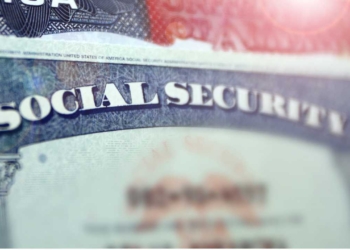For the nearly 7.5 million Americans receiving Supplemental Security Income (SSI), their financial outlook for the new year is getting a modest boost. The Social Security Administration (SSA) has officially announced a 2.8% cost-of-living adjustment (COLA) for 2026, a move that will increase monthly SSI payments starting this December 31st.
Well, actually, it’s January 1, 2026, the actual date for the COLA to come into play, but, here’s a schedule change: the SSI benefits are paid on the first day of every month, unless that day is a weekend or holiday. In such case, the benefit deposit is moved to the closest work day, in this case, December 31st.
The impact of the COLA increase in the SSI benefits
The increase, while seemingly small, is very important for recipients who rely on these SSI benefits for their daily needs. The adjustment is designed to help fixed incomes keep pace with inflation, though advocates argue it often falls short of seniors’ and disabled individuals’ actual rising expenses, particularly in healthcare .
The announcement of the COLA was delayed this year due to the recent government shutdown, which paused operations at the Bureau of Labor Statistics (BLS). The data necessary for the calculation was finally released on October 24, allowing the SSA to proceed with its announcement .
By the numbers: What the 2.8% COLA means for your SSI payment
| Category of Beneficiary | Maximum Monthly Payment in 2025 | Projected Monthly Payment in 2026 (2.8% COLA) | Estimated Monthly Increase |
|---|---|---|---|
| Eligible Individual | $967 | $994 | +$27 |
| Eligible Couple | $1,450 | $1,491 | +$41 |
| Essential Person | $488 | $502 | +$14 |
How is your SSI payment increase calculated?
The COLA is not an arbitrary figure but is determined by a specific formula laid out in the Social Security Act. The calculation is based on the Consumer Price Index for Urban Wage Earners and Clerical Workers (CPI-W) from the third quarter—July, August, and September—of the current year compared to the previous year.
According to the SSA, the average CPI-W for the third quarter of 2025 was 317.265, compared to 308.729 in 2024. The resulting increase of 2.8 percent is a direct product of this calculation. This automatic adjustment mechanism was established in the 1970s to ensure that benefits would not be eroded by inflation without requiring a new act of Congress each year.
While we wait for the COLA to be implemented, you’ll see the October 31st payment, no deposit in November (obviously) and the December 1st with the 2025 values, and 31st deposit with the 2026 updated amounts.
Is the federal government shutdown delaying Social Security payments?
The U.S. government’s partial federal shutdown is dragging on: 24 days and counting by today. It’s a mess while the Congress is totally gridlocked, and the situation is that they can’t agree on a funding bill, and they’ve just recessed for the weekend without a solution. So, this is all rolling into next week.
The big story here is the impact on people. We’re talking over two million federal workers either stuck at home on furlough or being forced to work without knowing when their next paycheck is coming.
Sure, the absolutely essential stuff is still running. Think air traffic control, national security… those operations are protected. But pretty much anything deemed “non-essential” is frozen. A huge one for everyday folks? The IRS. Their operations are massively scaled back, and that means if you’re waiting on a federal tax refund, you’re going to be in for a delay.
Here’s the crucial part everyone should know: this only hits federal payments. If your state, like New York or New Jersey, is sending out its own rebate or stimulus checks, those are totally unaffected. Those programs are funded at the state level, so that money is still moving. The Social Security checks are, so far, not delayed and won’t be impacted. At least during November deposits.







